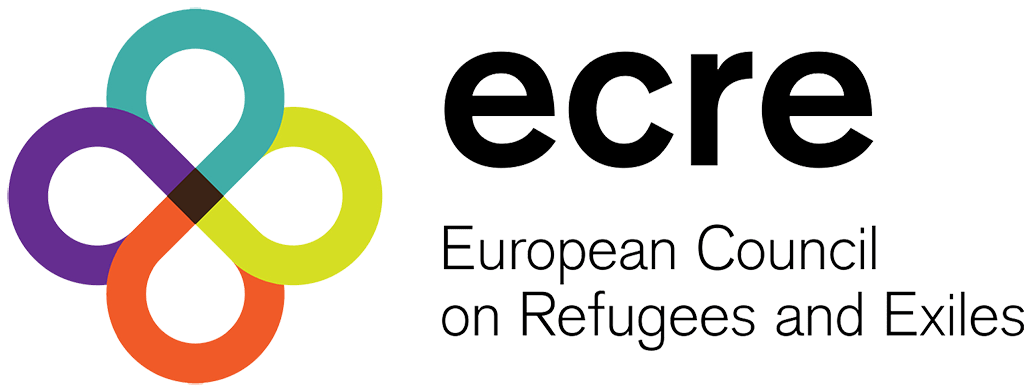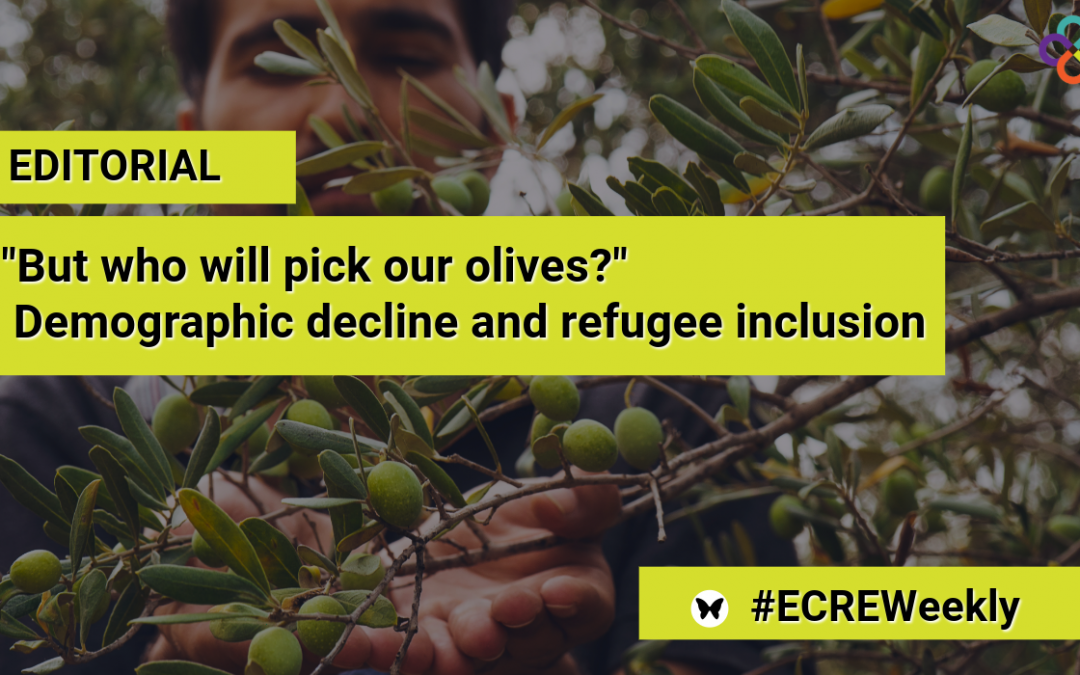By Catherine Woollard
Week after week, newspaper articles and research publications sound the alarm on the impact of Europe’s demographic crisis. Last week, a piece put the spotlight on Poland, arguing that this is not just an economic question but one of security. The fear has reached the top of governments: “But who will pick our olives?” was the plaintive cry from Greek Prime Minister Kyriakos Mitsotakis ahead of one of last year’s regular Council discussions on how migration is the greatest threat that Europe faces etc, etc.
Greece is not alone in changing its position in the face of the demographic crunch. Spain with a generally more open policy has also just regularised 300,000 people (and is the only EU member state with strong economic performance… coincidence of course); Italy has regularised and opened some safe routes; pro-migration statements have been even been uttered by those very open countries of Poland and Denmark.
Could it be that Europe is approaching a tipping point, where the debate on migration shifts from negative to positive? It may come, but right now we are in a paradoxical situation where policy and law-making exists in acute tension with economic necessity.
Attempting to ride two horses at the same time, European states pursue policies and laws which are ever more hostile, restrictive and punitive, aimed at deterring people from coming to Europe, while at the same time desperately flying around the world trying to attract more immigration, often through dodgy dealings with agencies and governments alike.
One of the most obvious solutions to the demographic challenge is side-stepped or ignored outright: refugee inclusion. Refugees are not there to help Europe with its demographic problems, of course – European states have strict obligations under international and EU law to provide international protection – but a clever refugee inclusion policy would be highly advantageous for Europe as well as benefiting the people themselves.
A few simple steps would suffice.
- Wake up!
The extent of the challenge facing Europe is exposed in last year’s World Bank report ‘The Journey Ahead: Supporting Successful Migration in Europe and Central Asia’ which analyses the demographic trends behind labour shortages. What is particularly striking is not the numbers but the geographic scope of the problem: previously, European countries depended on drawing migration from other parts of Europe – from East to West, from North to South, in recent years, from the Western Balkans into the EU, or from the Caucasus into Russia and so on. This is no longer possible – all countries across Europe are affected by the same trends of declining birth rates and rapidly ageing populations.
- Be honest with the population
As European states recruit populations from other regions of the world, their current approach is dumb stealth: bring people in and hope no-one notices. All across Europe there are new populations, in some cases highly visible, despite little acknowledgement by politicians and public administrations that they are actually present and even though they may be doing everything from working as doctors in hospitals or front-of-house staff in hotels to driving buses. It is also the case for less visible activities such as managing IT systems, scientific research and factory work. In their aping of the Far Right, many political parties maintain an anti-migration discourse while at the same time supporting migration. Followed by handwringing about why the public doesn’t trust politicians any more… At some point, political leaders have to be more honest.
The state of denial suits certain vested interests. The lack of oversight and regulation and recognition even, means the presence of a pool of people in a precarious situation, highly exploitable. All kinds of issues arise, low pay (no pay in some cases), high dependence on employers for status, business for organised crime, corruption of public administration…
- Access first
Before inclusion, access to protection and access to territory are required. Who will pick our olives? Not those who drowned in the Pylos shipwreck. Not those beaten back at the border or kidnapped by balaclavered men jumping out of the back of a transit van. Nor those denied access to an asylum procedure because of the pretence that Türkiye is a safe country.
- Support refugee inclusion through practical measures
As well as allowing more regular migration for those without protection needs, now is the moment to invest strongly in refugee inclusion. Most people seeking asylum in Europe are found to need international protection – if they get access to a procedure. They will stay in Europe, possibly for a very long time given that many come from situations of protracted displacement with no chance of return. Integration is a national competence but the EU can support it, with convening powers, expertise and funding. Maintaining EU funding for integration in the next Multiannual Financial Framework, the EU’s seven-year budget which is already under discussion, will again be a battle – inexplicably as it should be a no-brainer.
- Prioritise inclusion in implementation of EU asylum law
One of ECRE’s objections to the reforms of EU asylum law was the number of measures that undermine inclusion: it will be harder to get protection for those who need it due to the expansion of second-rate procedures, more people will be in detention and punitive measures such as withdrawing reception conditions will increase destitution and irregularity. Despite foreboding about the impact of these measures, it is not without hope. First, the Pact also integrates changes from the 2016 reform package which had a stronger focus on integration. Second, despite largely taking the form of regulations, considerable discretion remains for member states. Third, there is an opportunity to address longstanding compliance problems which hamper inclusion.
For example, in relation to the first element, the recast of the Reception Conditions Directive brings forward the deadline for granting access to the labour market for most asylum applicants to six rather than nine months. In practice, many states already offer earlier access – and benefit from it. The recast also introduces an obligation to provide language and vocational training to all. Perhaps the issues of sub-standard reception will finally be dealt with. In the Asylum Procedures Regulation, it is possible to prioritise manifestly founded applications to get people through the system; the Crisis Regulation allows the use of expedited procedures.
Member states can make smarter choices, for instance, limiting the use of detention and other restrictions on movement, such as reception in isolated region. Finally, implementing obligations on family reunion – to and within Europe – including those under Dublin / Asylum and Migration Management Regulation, would support inclusion. Response to displacement from Ukraine is again instructive: some countries have had amazing rates of labour market absorption at above 70% (and others less so – see Germany – mainly due to bureaucratic obstacles), and allowing freedom of movement has facilitated family reunification and in turn encouraged inclusion.
All these measures support the independence and self-sufficiency of the people affected, while also benefiting the hosting states. It’s all so obvious yet most European states remain in a state of denial – desperately trying to recruit migrants in order to tackle the economic and indeed existential crises that result from demographic change, while at the same time making harsh, nasty, often openly racist, or otherwise hostile statements that hardly make their countries appealing for those who have a choice, while beating back at the borders those who have no choice but to seek protection. These people are not a resource for our use: international protection is a legal and moral obligation. Nonetheless, humane treatment would also be in Europe’s economic interests. As populations decline, maybe that argument will have more impact than the legal and moral ones.

